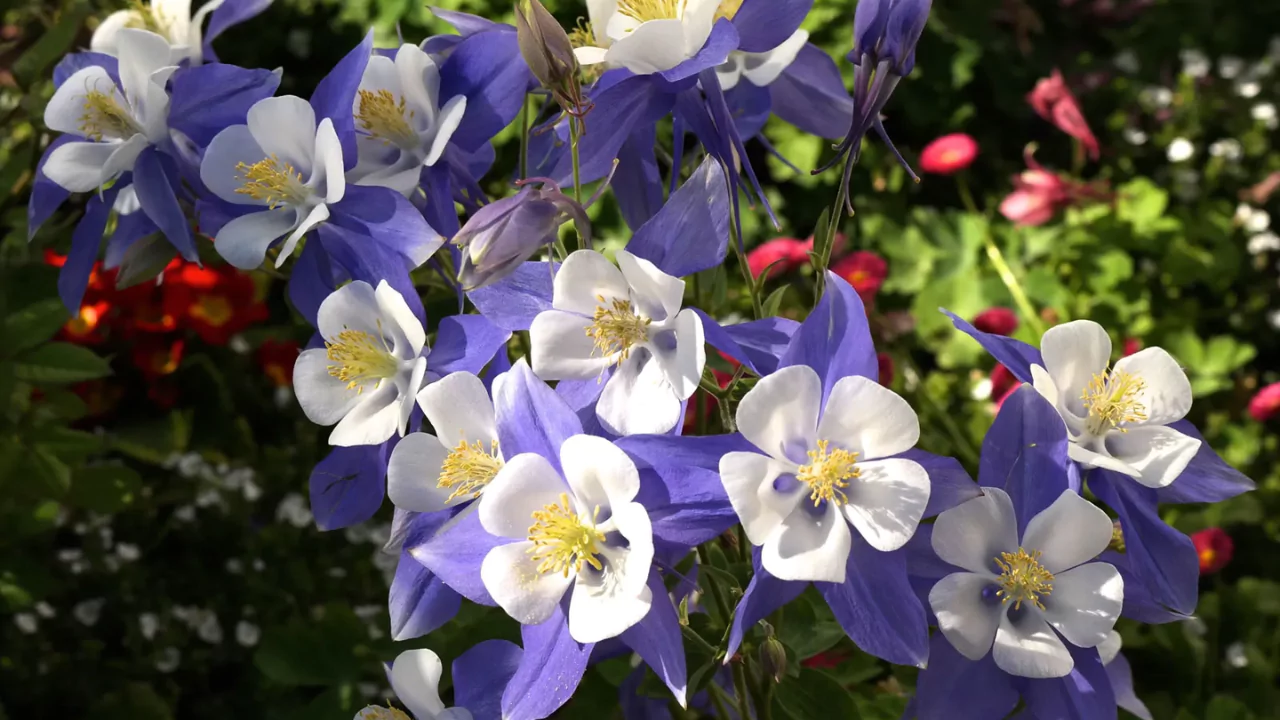
Travel to the mountain towns in the Rocky Mountains and in other locations around the United States, and you will see columbines blooming in gardens and along stream beds and woodlands. Despite their delicate flowers, these plants are tough and rank as some of the hardiest native species.
Their habitats often consist of soils made of barely granitic powder. Such soils tend to be very acidic, lacking essential nutrients, and combined with sparse water and harsh temperatures, this creates a challenging environment for most plants.
Regardless, these convenient little plants sprout without fail every spring. Their vivid colors are cheerful to humans while providing sustenance to birds and insects.
Columbines are also beneficial to home gardens as they do well in sun to partial shade. Although they prefer well-drained loamy soil, they can adapt to a wide range of soil conditions.
Columbines’ blooms may fade early in the summer, but their lace-like foliage remains attractive throughout the season, and in the fall, the foliage takes on hues of purple and red. Like many native species, columbines are resistant to deer. They, along with other facts about the columbine, will be discussed later:
- The name columbine derives from the Latin word ‘columba’ which means dove.
- The -leaves have a distinctly narrow base that with scalloped edges. Numerous columbines expose gray-blue or blue-green foliage. Columbines are part of the buttercup family.
- Spring is when columbines bloom. Their flowers are soft and somewhat delicate. They can be multi-colored or monochrome and are often red, yellow, blue, pink, lavender, and even pink.
- The U.S forest service states that columbines arrived in North America between 10000 to 40000 years ago. They traveled from Asia using the Bering land bridge into Alaska.
- The deep-blue columbines of the Rocky Mountain region are direct descendants from the earliest columbines.
- Wildflowers such as columbines are native to showcased temperate regions in Europe and North America. There are over 70 species and hybrid versions of columbines, and many new species emerge with ease due to columbines cross pollinating.
- To sustain them through dry periods, they form a long taproot.
- Columbines usually reach a height of 1-3 feet and a width of 2 feet. The growth is more compact and floriferous in full sun, while they become leggy in shade.
- The columbine’s Latin genus name is Aquilegia, which is based on the five sepals of the flower which resemble an eagle’s talons.
- Hummingbirds, butterflies, and bee’s favorite cuisine is columbines as they produce long spurs rich in nectar. In woodland regions, the air seems to buzz with birds and insects seeking out this nectar.
- Wild columbines are not adapted to specific climates as they can be found in dry desert locations as well as in mountain woodlands.
- Columbines serve as a great addition to a naturalized garden. In early spring, colorful blooms attract birds and bees while in autumn, fall the seed pods become delectable treats for birds.
- Although columbines are perennials, they do not have a long lifespan. Most plants die within two to three years, but they easily grow from seed. If left alone, seed pods ensure that new plants will be produced yearly, although the flowers may not always be true to the original plant.
- The columbine seeds are used by Native Americans to concoct an infusion that is used for treating headaches.
- A. caerulea’s blue and white varieties are found throughout the Rocky Mountains and also serves as the state flower of Colorado. Edwin James was the first to hike and discover the flower in 1820. Schoolchildren voted in 1899 for it to become the state flower. The romance between the state and flower continued, culminating in the 1915 adoption of “Where the Columbines Grow” as the Colorado state song. The flower was granted protected status by the state in 1925.
- Columbine is the name of a city in Colorado, as well as several subdivisions and neighborhoods in the vicinity of Littleton, Colorado.
- Leaf miners are pests that tunnel through columbine leaves. Although unsightly, the problems caused by these pests are usually not life-threatening to the plant. It is advisable to prune the leaves post-flowering to manage this issue.
- Due to columbine’s long taproots, they do not transplant easily. It is best to plant small specimens and place them in a fixed position.